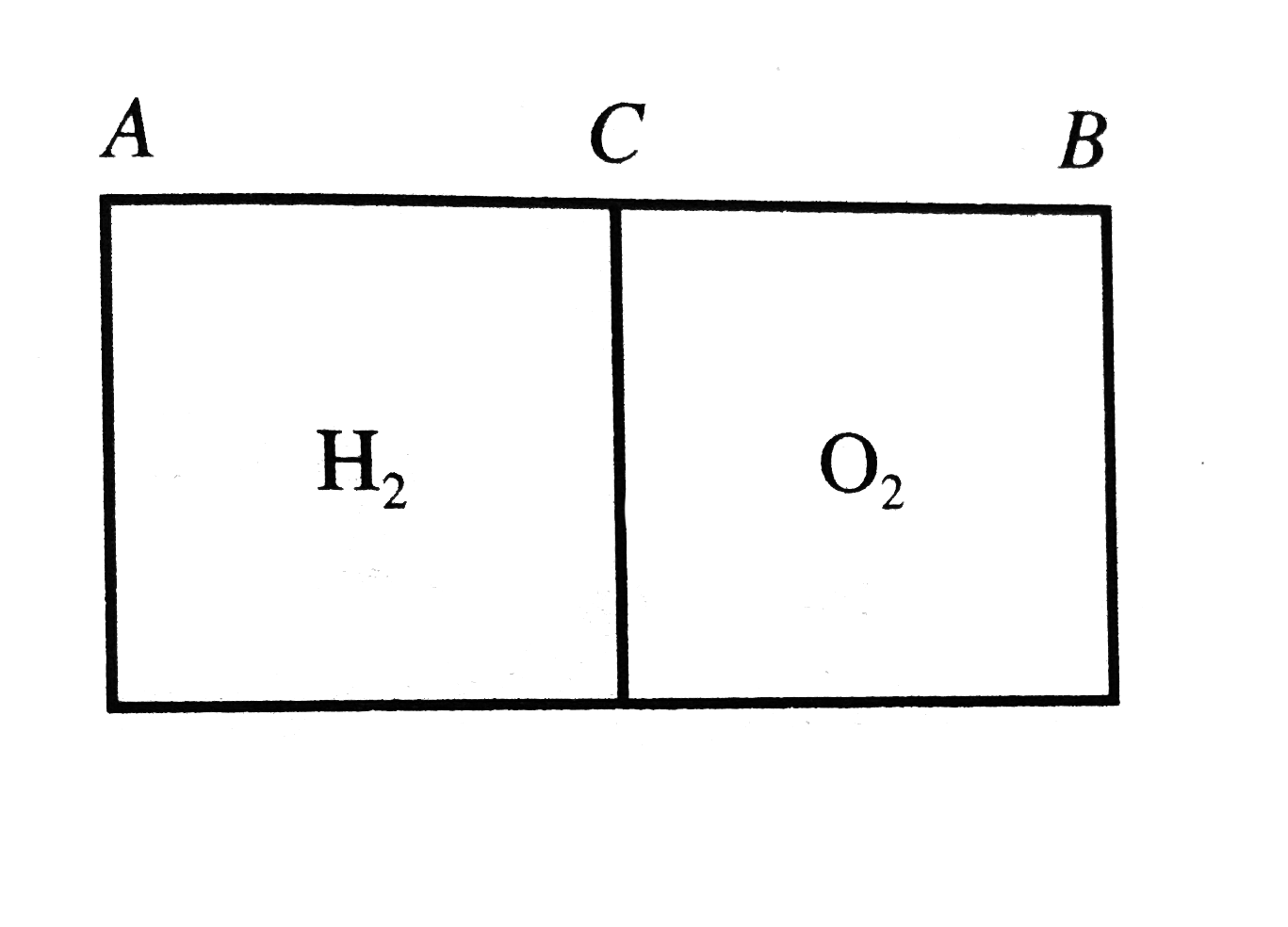AB is a cylinder of length 1.0m fitted with a thin flexible diaphragm C at the middle and two others thin portions ACandBC contains hydrogen and oxygen gases , respectively . The diaphragms AandB are set into vibrations of same frequency . What is the minimum frequency of these vibrations for which the diaphragm C is a node ? Under the conditions of the experiment , the velocity of sound in hydrogen is 1100m/s and in oxygen is 300m/s.

When diaphragms A and B are set in oscillations , antinodes are formed at A and B while a node is formed at C ( given)
Also AB=1.0m
and AC=CB=l(say)=1/2=0.5m
The portions ACandBC behave as closed pipes .
In a closed pipe , the modes of vibrations are given by
l=λ4,3λ4,5λ4,....
i.e., l=(2r+1)λ4,r=0,1,2,3,...
or λ=4l2r+1r=0,1,2,3,....
For hydrogen λ1=4l/(2r1+1)
For oxygen λ2=4l/(2r2+1)
In both gases the frequency is same
As n1=n2
or v1λ1=v2λ2
v1v2=λ1λ=l1l2×(2r2+1)(2r1+1)
As l1=l2=0.5m
i.e., v1v2=2r2+12r1+1
=1100300=2r2+12r1+1
i.e., 2r1+12r2+1=311
For minimum frequency , the integer r1andr2 should be least . Therefore by the inspection
r1=1andr2=5
Therefore , the frequency of oscillations is given by
nmin=v1λ1=(2r1+1)v14l
=(2×1+1)×11004×0.5=3×11002=1650Hz
i.e., 2r1+12r2+1=311
For minimum frequency , the integers r1andr2 should be least. Therefore by inspection
r1=1andr2=5
Therefore , the frequency of oscillations is given by
nmin=v1λ1=(2r1+1)v14l
=(2×1+1)×11004×0.5=3×11002=1650Hz
Similar Questions
AB is a ccylinder of length 1m fitted with a thin flexible diaphragn C at the middle and other thin flexible diaphragms A and B at the ends. The portions AC and BC contain hydrogen and oxygen gases respectively. The diaphragms A and B are set into vibrations of same frequency. what is the minimum frequency of these vibrations for which diaphragms C is a node? (Under the conditions of experiment vH2=1100m/s, v_(0_(2) = 300m//s).

View SolutionA cylinder of length 1m is divided by a thin perfectly flexible diaphragm in the middle. It is closed by similar flexible diaphragams at the ends. The two chambers into which it is divided contain hydrogen and oxygen. The two diaphragms are set in vibrations of same frequency. What is the minimum frequency of these diaphragms for which the middle diaphragm will be motionless? Velocity of sound in hydrogen is 1100m/s and that in oxygen is 300m/s.
View Solution
Knowledge Check
the diaphragm in rabbit is a
Agap between the incisor and premolar teethBmembrane which surrounds and protects the brainCmembrance which lies between the external auditory meatus and tympanis carvity of the earDpartition of muscular septum separating the thoracic cavity from abdominal cavityVaginal diaphragm is
ASpermicidalBAble to prevent descent of ovaCable to prevent sperm contact with ovumDOivcidal
A cylinder of length 1m is divided by a thin perfectly flexible diaphragm in the middle. It is closed by similar flexible diaphragams at the ends. The two chambers into which it is divided contain hydrogen and oxygen. The two diaphragms are set in vibrations of same frequency. What is the minimum frequency of these diaphragms for which the middle diaphragm will be motionless? Velocity of sound in hydrogen is 1100m/s and that in oxygen is 300m/s.
View SolutionWhat is a diaphragm?
View SolutionWhat is a diaphragm?
View SolutionA hollow cylinder of length 1m is divided by a thin flexible by a thin flexible diaphragm at a distance one-third the length of the cylinder. It is closed by two other flexible diaphragms at the ends. Of the two chambers into which it is divided, the longer one contains hydrogen and the other oxygen. The two end diaphragms are set into vibrations of the same frequency. what are the frequencies of the end diaphragms for which the middle diaphragm will be motionless? Velocity of sound in hydrogen =1100ms−1 and that in oxygen =300ms−1.
View SolutionVaginal diaphragm is
View SolutionContraction of diaphragm
View Solution
